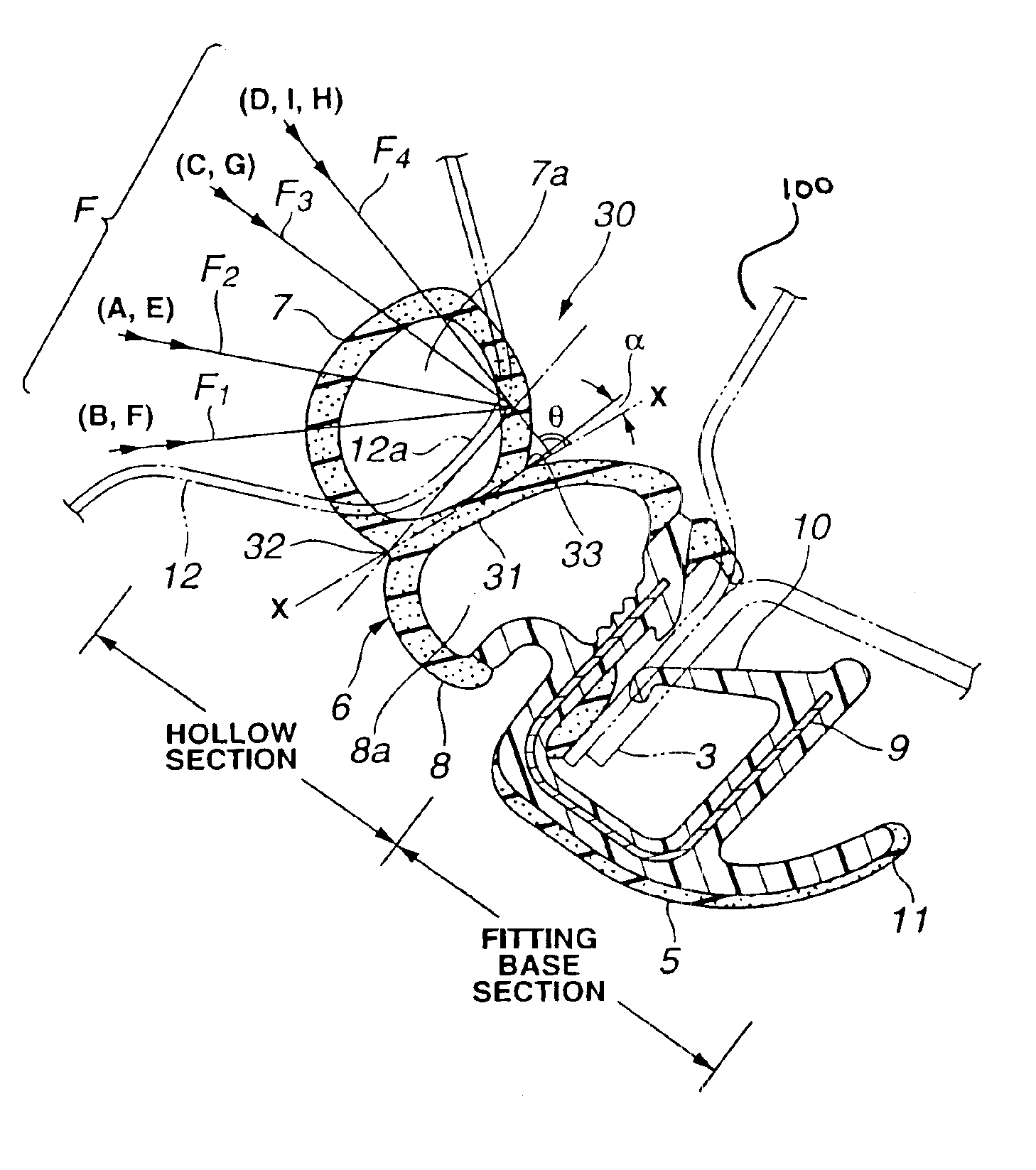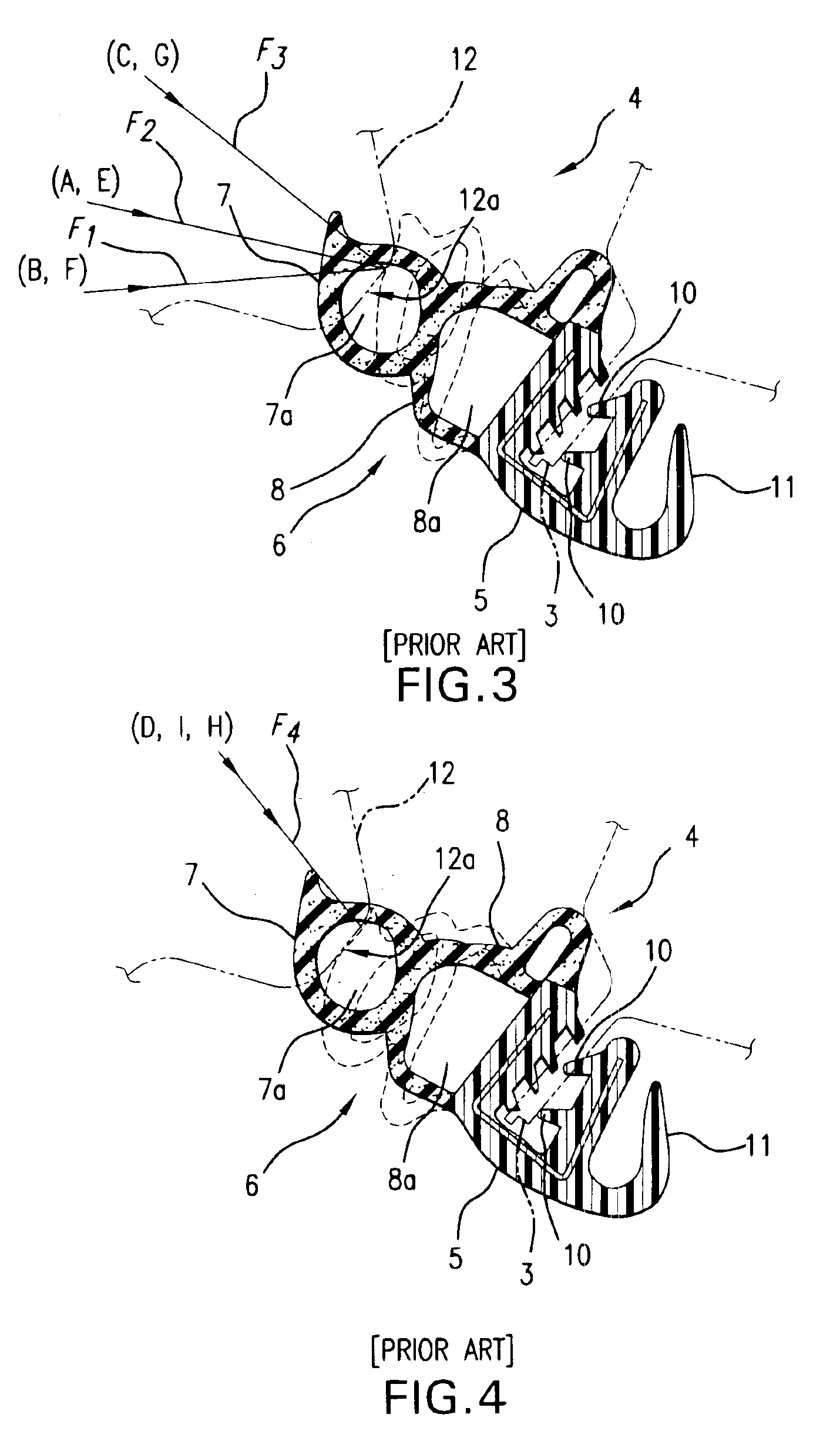Weather strip
- Summary
- Abstract
- Description
- Claims
- Application Information
AI Technical Summary
Benefits of technology
Problems solved by technology
Method used
Image
Examples
Embodiment Construction
[0020]Hereinafter explained based on drawings are examples of the present invention. As is seen in FIG. 5, a weather strip 30 of the present invention is provided with a fitting base section 5 having the same constitution as that of the above conventional example, and provided with a hollow section 6 having a constitution new over that of the above conventional example. Namely, a bulkhead 31 of the hollow section 6 or a line X—X forms right angle or right angle plus an angle cc, relative to an input direction (F4) corresponding to fitting sections D, I, and H. The bulkhead 31 partitions the hollow section 6 into a abutting section 7 and a middle section 8. The line X—X runs from an inside neck section 32 to an outside neck section 33. The inside neck section 32 of the hollow section 6 is disposed on an inside of a periphery of a body opening section, while the outside neck section 33 of the hollow section 6 is disposed on an outside of the periphery of the body opening section. An i...
PUM
 Login to View More
Login to View More Abstract
Description
Claims
Application Information
 Login to View More
Login to View More - R&D
- Intellectual Property
- Life Sciences
- Materials
- Tech Scout
- Unparalleled Data Quality
- Higher Quality Content
- 60% Fewer Hallucinations
Browse by: Latest US Patents, China's latest patents, Technical Efficacy Thesaurus, Application Domain, Technology Topic, Popular Technical Reports.
© 2025 PatSnap. All rights reserved.Legal|Privacy policy|Modern Slavery Act Transparency Statement|Sitemap|About US| Contact US: help@patsnap.com



